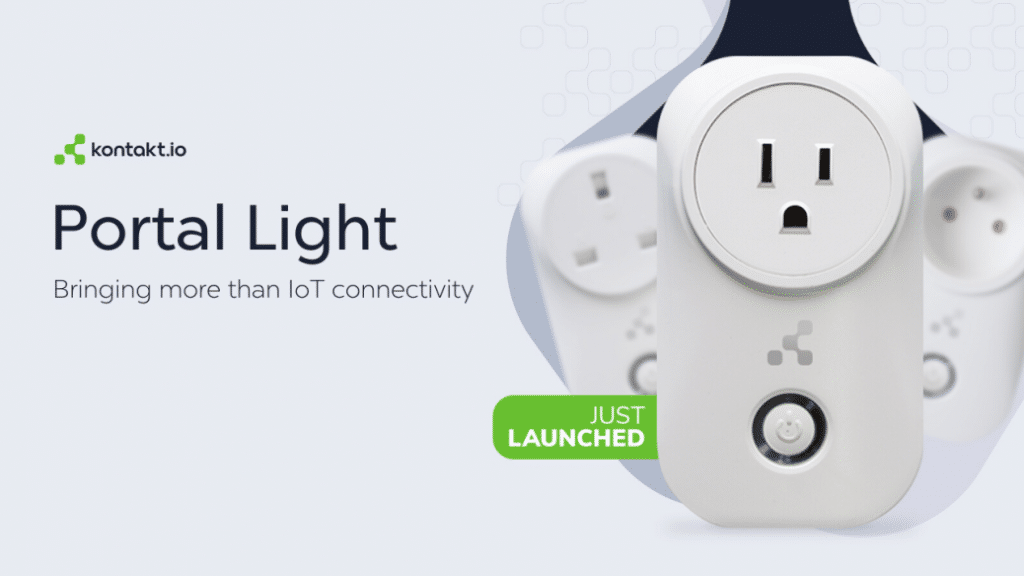
There is no one-size-fits-all plan when it comes to the infrastructures that support indoor location-based solutions. Every deployment has its own unique requirements, setting and context. Broadly speaking, we can group most installations into two categories, beacon-based and gateway (or access point-based). Their separate categories result from the fundamental differences in their missions. Each is aimed at different types of solutions and demands a different approach.
In this post, we’re going to focus on gateway, or access point-based, infrastructures and the details and processes involved in their deployment. In this kind of project, an application connects to a gateway that defines the location of a moving asset that is affixed with a beacon or tag. Next week, we’ll move to the other side of the divide and examine the infrastructures behind beacon-based solutions for proximity marketing, location-based content, indoor wayfinding and other applications based on interactions between mobile phones and beacons.
Looking for an affordable and robust BLE gateway to achieve better room-level accuracy?
Order Portal Light now.
In a gateway-based project, each asset is affixed with a beacon or tag, which then connects to a gateway that can be accessed using an application or specific hardware. Gateway-based projects are used primarily for asset tracking and other real-time location services (such as an employee or visitor tracking). For example, an employee or visitor might carry a Bluetooth Lanyard Tag that turns any card ID into a smart one, or a button-equipped badge that tracks their location, gets them through security and ensures that if there is an emergency everyone is accounted for. Alternatively, an asset such as a defibrillator can be tracked to ensure it is put back where it belongs.
Beacon-based infrastructure, on the other hand, uses mobile phones to provide users with wayfinding information and to send messages that are appropriate to their specific location. This can be used for marketing, wayfinding, and location-based content (such as content that complements a museum display). Phones connect only to the beacon, which keeps them separate from your local network.
This system is generally used in healthcare, smart buildings, and industrial spaces including warehouses. It is ideal for keeping track of assets and understanding the flow of people. Gateway-based infrastructure is also useful in certain crises, whether it is to support social distancing during the COVID-19 pandemic or ensure full evacuation of a building in the event of a fire. Traditional use cases include:
For real-time location services, a gateway or access point-based system is ideal. Beacon-based infrastructure tracks phones, not objects or people (a person can put their phone down and go "off-grid," making badges a better system for employee tracking. GPS-based trackers also do not work indoors or anywhere else where there is no clear access to the sky. The system, thus, is based on Bluetooth Low Energy, which works indoors and uses cheap beacons that can tag assets and personnel. It works as follows:
1. Each asset is tagged with a BLE beacon that transmits a unique ID.
2. Fixed BLE-compliant Access Point infrastructure forms a BLE Gateway. This receives the signal and sends the signal strength, unique ID and timestamp to backend software. Beacon grids can be set to provide different levels of certainty in different areas as needed.
If your Wi-Fi infrastructure is not BLE-compliant yet, check our Portal Light - a next-generation, affordable, plug-and-play BLE gateway that will help you accelerate the adoption of indoor IoT and location use-cases through infrastructure simplification.
3. The software computes the posItion of each asset in real time. This requires sophisticated AI algorithms designed for a specific use case.
4. A location application receives this information and uses it, in conjunction with the floor plan and zone information to create triggers, alerts, and events.
5. Employees are provided with panic buttons on their badge or other beacons that can be used in cases of employee distress or duress. The button press event maps to employee id, location, timestamp and configured notifications or workflows.
Most of the processing takes place in the cloud, reducing the amount of hardware needed by the gateways to function. This is a network-centric approach that is oriented towards protecting assets and people. For a triangulated location, a greater density means greater accuracy but also higher cost; the deployment needs to balance needs and budget. In order to achieve room-level accuracy, we recommend Portal Light, which augments WiFi infrastructure and helps you to reduce operating costs and capital expenses of additional expensive access points. Geometry is important, but a weak signal is okay since BLE can work with very low bandwidth and at a long distance. The level of accuracy needed depends on your use case.
Alternatively, the zone-based location works with multiple access points. Cloud software will calculate which AP is closest to the beacon and show that as the location. That AP or group of APs is the zone. This is then refined by using room-level aggregators. This level of accuracy is generally fine for personnel and visitor tracking, but is less effective for tracking assets, especially in a warehouse or industrial situation where a worker is trying to find a specific item or part quickly.
When designing a gateway-based system, there are a number of considerations you need to take into account:
To start with, take into account the overall characteristics of the BLE signals used for real-time tracking.
You should also consider your use case details. Take into account:
All of these factors affect beacon positioning, software design, and the kind and number of physical tags or beacons that may need to be acquired.
Given the signal characteristics above, it's necessary to do a proper site survey and make plans that include:
All of these factors affect the design of the system and the software you deploy to manage it. Most can be dealt with by following certain best practices, which do not replace those for WiFi design. Instead you should:
Designing the right system involves taking into account all of these factors and positioning gateways/APs appropriately. The most important thing to consider is the balance of needed accuracy with cost-based factors, and the level of accuracy needed depends very much on the assets being tracked.
To deliver the right infrastructure to a client, you should start off with a business and technical workshop to go over the plans and establish what their use case actually is. Sometimes they may not know their own needs in detail without going over them with you first. You should do your own site survey rather than relying on the client.
When setting up the location infrastructure, make sure you integrate properly with existing Wi-Fi and address any coverage gaps before configuring the location server and doing your testing. Wi-Fi is often used to allow access points to talk to each other and the cloud and many sites may need to add additional routers to properly support this.
The application to support the use case also needs to be properly configured and tested. Handoff should not occur until after training and acceptance testing have taken place to make sure that your deployment suits the client's needs. Employees will need to learn how to use the system and applications properly.
Correctly installing a gateway-based real time location system requires an understanding of both the specific use case and the site. There are no shortcuts and no "standard" installs. The grid of access points needs to work with and around the floor plan of the site, the accuracy level needs to reflect the client's needs and budget, and the software has to be implemented correctly.
Kontakt.io has the expertise needed to help you through this complex installation process. All you need to start is to contact us for a demo kit. We will support you through this process and help ensure that you have the right real time location systems for your specific needs and budget.

How smart hospital solutions are delivering better clinical outcomes, greater efficiencies, and higher patient satisfaction through digital transformation using technologies like Internet of Things (IoT) and Artificial Intelligence (AI)
Turn your workspace into a modern one with Kontakt.io spatial intelligence solutions.
Learn how we can help improve employee experience, decrease carbon footprint, and
help you understand how your space is utilized in a SIMPLE & AFFORDABLE way.